‘No Other Place in the World’
Three Young Siblings Participate in First-in-Human Gene Therapy Trial
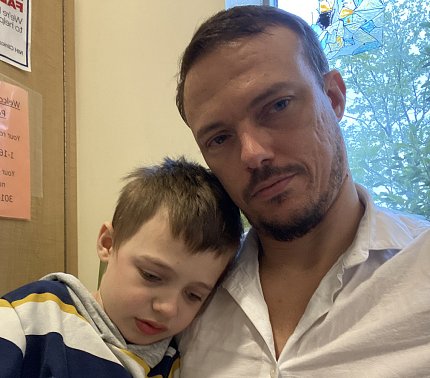
Five years ago, a family in Sweden finally got a diagnosis for their 3-year-old son who was struggling with speech and balance. After 18 months of testing, the medical team pinpointed the culprit. It wasn’t good news.
The little boy has an ultra-rare, fatal disease, as do his identical twin sisters. There was nowhere to turn, or so they thought. Then they found NIH, igniting a spark of hope.
Hampus Flysjo, who turns 8 this month, and his 6-year-old sisters, Isabella and Julia, have a neurodegenerative disease called GM1 gangliosidosis for which there is no treatment. This progressive disease destroys neurons in the brain and spinal cord, causing profound atrophy and loss of motor skills. There’s a continuum of severity. Children with their subtype typically live only until their early teens.
“It was emotional when we got the diagnosis,” said their father, Niclas, from a room in the pediatric wing in the Clinical Center in April. “We [initially] were told there were no treatments and no research into this disease.”
Meanwhile, Dr. Cynthia Tifft, deputy clinical director of the National Human Genome Research Institute, had been studying this disease for more than a decade, following dozens of patients with GM1 or the related GM2—also known as Tay-Sachs disease—as part of a natural history study.
An enzyme deficiency
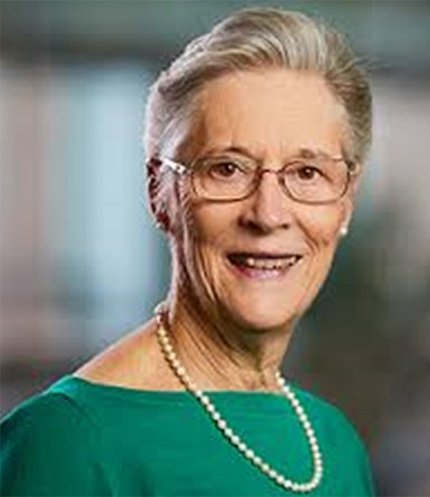
GM1 gangliosidosis is caused by a faulty copy of the GLB1 gene, which when healthy instructs the body to produce an enzyme called beta-galactosidase. This enzyme breaks down and recycles fat-sugar molecules called gangliosides found in neurons that are responsible for brain signaling. Patients with GM1 and GM2 can’t make the enzyme, so their bodies can’t degrade the gangliosides.
“Basically, you’ve got this big fat called ceramide, with sugars that are attached, and there’s a specific enzyme that breaks off each sugar,” explained Tifft. “The first sugar to come off is a galactose. Without the beta-galactosidase enzyme, that first sugar [GM1] can’t come off and gets stored in the neurons, building up to toxic levels in the brain.”
The disorders are recessive. Each parent is an asymptomatic carrier, giving a copy of the faulty gene to the child. Hampus, Isabella and Julia have the late-infantile subtype of GM1, in which symptoms don’t start appearing until 1 to 2 years old.
When Hampus was diagnosed, his sisters were 2 and at the time seemed unaffected. But months later, they too began showing symptoms.
“Genetic testing confirmed our worst fears and our world just fell apart,” Niclas said during an NIH Rare Disease Day symposium in 2020. “Our kids were going to lose one another and we were going to lose them all.”
Collaborating toward a therapy
While Tifft was researching GM1, a team at the University of Massachusetts was working to develop a gene therapy vector. A group at Auburn University’s veterinary program began testing that vector in cats with GM1 after it showed potential in mice.
“Our 3 groups met at a patient advocacy meeting and we worked together for 10 years trying to bring this to fruition—one doing the vector, one doing the large animal testing and us doing the natural history study in the patients, because very little was known about how the disease progresses,” Tifft said. “And we cobbled together enough resources to be able to produce the first human-grade batch of gene therapy vector.”
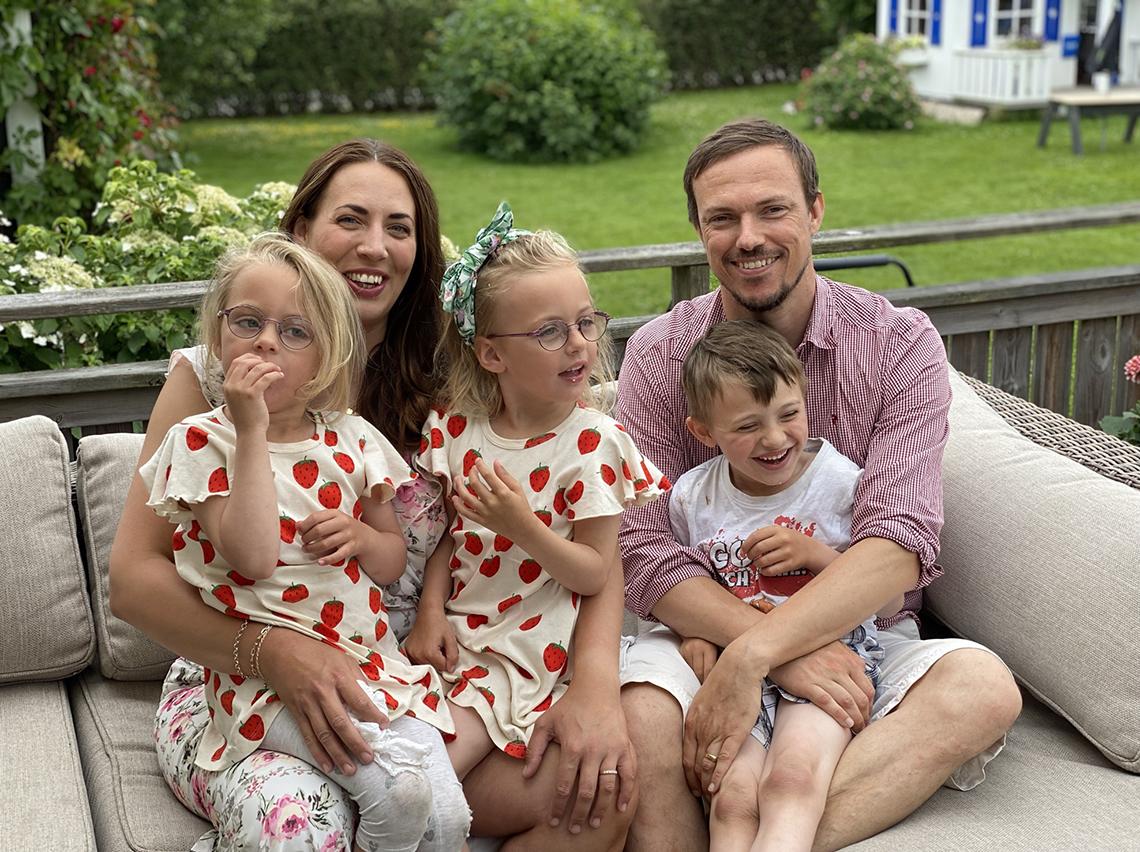
Photo: Niclas Flysjo
Following their children’s diagnosis, Niclas and Jessica connected with foundations and began researching online. When they learned of Tifft’s first-in-human gene therapy trial at NIH, the small study was not yet recruiting patients. As soon as the trial opened in 2019, they applied to enroll their children.
The clinical trial is an intravenous, single administration of a healthy copy of the GLB1 gene. It’s an open-label study, meaning no placebos; every child gets the therapy. In May 2019, a 10-year-old girl became the first human to receive the therapy.
Arriving in the nick of time

Photo: Niclas Flysjo
The Flysjo family enrolled in the trial and planned to travel to NIH in March 2020. But a call came in the middle of the night, Swedish time. NIH told them to travel immediately. The international border would be closing due to Covid-19.
After reworking their travel plans, which almost got derailed when a hurricane closed the bridge to the airport, the Flysjo family cleared immigration 3 hours before the border closed.
“We then packed our stuff into a rental car with the kids screaming in the background,” Niclas recalled. “We were so relieved when we finally reached our destination.”
After their required 2-week off-site quarantine, Hampus, Isabella and Julia got prepped for treatment. They got dosed on Apr. 28, 2020, becoming the third, fourth and fifth kids to receive the therapy. Given the children’s immunosuppressed state following treatment, and ongoing pandemic travel restrictions, the family stayed at the Children’s Inn for 7 months.
‘The kids look great!’
Back at NIH spring 2022 for their 2-year evaluation, in a room at the Clinical Center, Hampus sat in his stroller and each twin girl on a parent’s lap. Hampus and Isabella tugged at a stuffed monkey, a situation they peacefully and quickly resolved when he relinquished it to his sister.
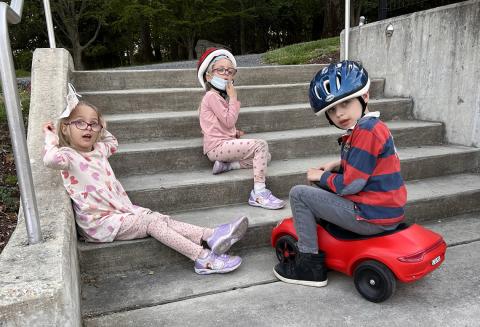
Photo: Niclas Flysjo
“Parents have said this to me for years—and I’ve finally come to believe them—that there’s a lot more in their [kids’] brains than they can articulate,” said Tifft. In GM1 patients, receptive language is good and the children can learn.
The three, sweet young faces looked expectantly at the new visitor in the room interviewing their father. Hampus has some words and can sign, but all three children only understand Swedish.
“It’s difficult to teach them new things,” said Niclas. “It’s extra work for them to learn things that come naturally to other children.”
At the follow-up, though, the brain scans and developmental testing showed minimal if any decline since the gene therapy. The kids had not lost any skills.
“We would not have expected that if they were not treated,” said Tifft. Another surprise was that they had matured, she added. During the latest rounds of testing, they knew the drill, cooperated and were not as needy.
“The kids look great,” she said. “Not every child has done well with this vector, but these three children have done exceedingly well. How long that will last, I don’t know.”
By this age, GM1 patients typically would have difficulty eating, chewing and swallowing, but the Flysjo kids are nowhere near that, said Tifft. “Part of this has to do with the excellent care they receive from their family.”
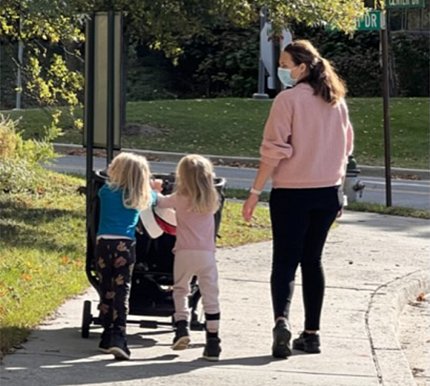
Niclas and Jessica provide a supportive, loving environment and keep the kids active.
“We love the outdoors,” said Niclas. “In summer, we swim in the ocean. In winter, we play in the snow in the backyard.”
Every day, after school, Niclas’s parents take the kids for a 2- to 3-mile walk.
“I think half the reason these kids are still walking is not just the therapy,” said Tifft, “but because they’re out there every day, moving.”
The Flysjo parents remain hopeful about the potentially life-saving treatment.
“We knew with Covid, some people were stopping treatments or being sent home as clinical trials were discontinued,” said Niclas. “We’re so grateful to be able to come here. There’s no other place in the world where we could get treatment for this.”
The Flysjos have yet another reason to be grateful. Through preimplantation genetics, Jessica had a healthy embryo implanted. They’re expecting their fourth child in December.
